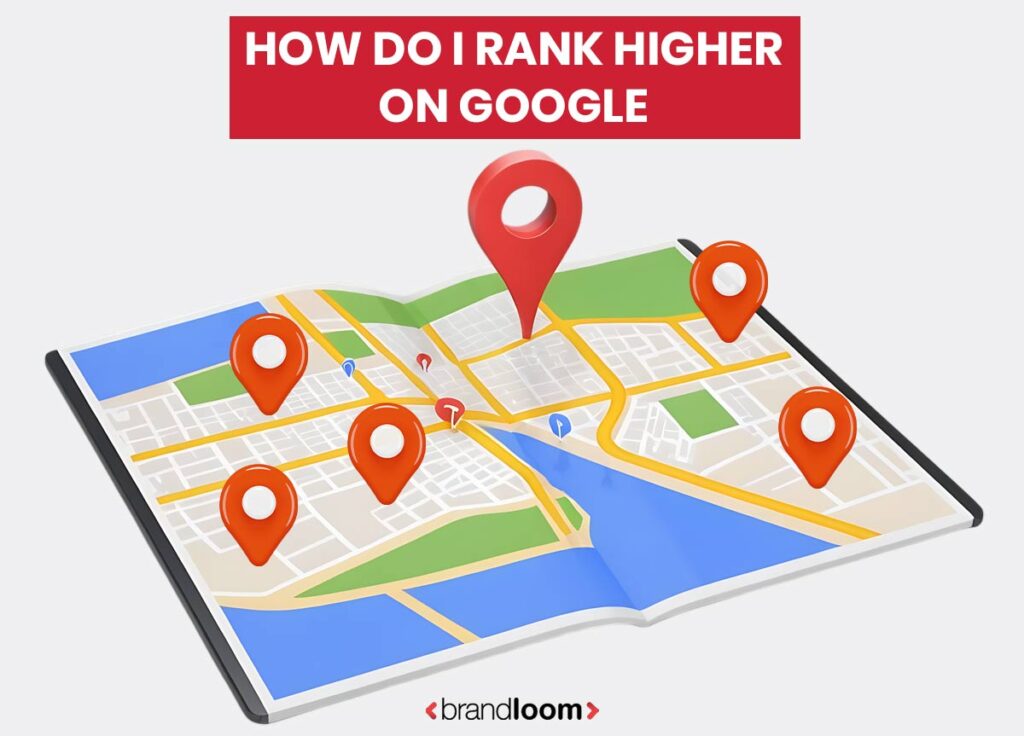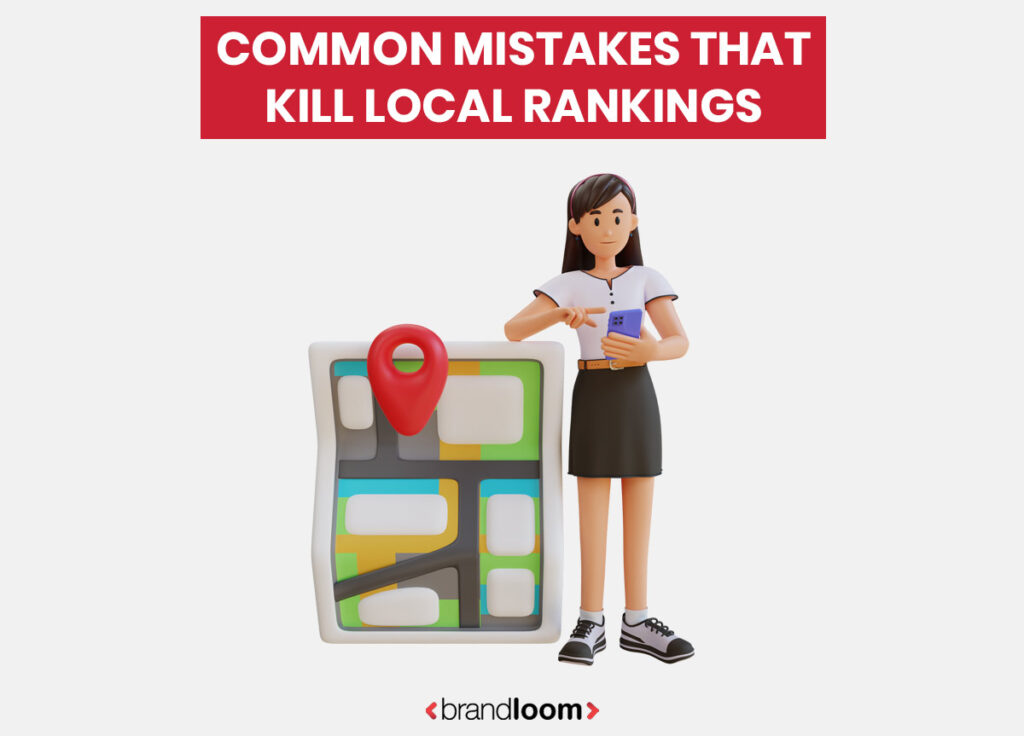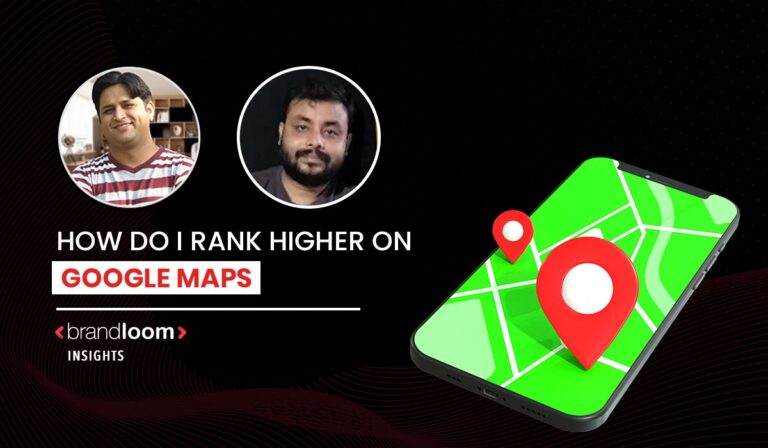Your Google Business Profile, formerly known as Google My Business, is the foundation of your local online presence. It makes your brand show up on Google Maps and in local search results when people search for the types of products or services you offer. But now, what if someone searches for the “best salon near me” or “top-rated clothing store nearby” and your business doesn’t appear? That’s not just disappointing; it’s a lost customer.
In an era when mobile-first and voice searches dominate, more than 58% of customers are finding local businesses using voice search. People demand of their phones, “Where’s the best Thai food near me?” If your content and GBP listing don’t match those natural language queries, you miss out on high-intent prospects.
In today’s competitive digital landscape, ranking on Google Maps is essential for local businesses that want to be discovered. However, the burning question that stops many companies from moving forward is, how do I rank higher on Google Maps?
While dominating local search results and ranking higher on Google Maps might seem complex, it’s not as overwhelming as you think. Local SEO efforts can bear special fruits if you know the key ingredients and how to combine them well. This comprehensive guide aims to clear your path as you navigate through the intricacies of Google Maps optimization to give your business the local visibility it deserves.
What Is Google Business Profile?
Google Business Profile (GBP) is a free business listing platform that allows brands to manage their online presence across Google Search and Google Maps. It displays your location, hours of operation, contact information, reviews, services, images, and much more, all in one searchable card
A refined GBP theory allows your business to be found by those who are actively seeking a solution nearby. Whether it’s a customer typing “best café near me” or using voice search to ask, “Where can I get a good hairdresser nearby?”—your GBP gets you directly to them when they’re finally ready to take action.
We at BrandLoom help businesses unlock the full potential income from GBP by optimizing their profiles with the perfect keywords, the correct information, and the most appealing visuals. A robust profile instills trust and enhances your local SEO and gets your brand into that top 3 search result block, known as the Google local pack.
Understanding Google Maps Rankings
Google Maps has also evolved into a formidable engine that delivers instant local traffic by connecting companies with high-intent prospects already searching for services within their local area. Local search helps brands reach high-intent users exactly when they’re ready to make a purchase.
The local results are primarily based on relevance, distance, and prominence, forming the foundation of Google’s local ranking algorithm. These three main factors interplay to decide which businesses show up for that desired local pack and higher rankings on Google Maps.
The local pack that shows up at the top of the search results features three businesses that Google believes are most pertinent to whatever the searcher is looking for. Knowing how to target these elements is the most essential part of any business aiming to dominate local search results.
Key Factors That Influence Google Map Ranking
Whether you’re a local salon, restaurant, or business, getting a handle on how Google Maps ranking works is your first step toward visibility. So, if you’re wondering how to rank higher on Google Maps, these are the three top factors that lead to success in the local pack and local search results

1. Relevance to Rank Higher On Google Maps
Relevance means how well your business fits what a potential customer wants to find on Google. It’s not just about being in the right category; it’s also about presenting the right goods and services in a clear and concise way.
To improve relevance:
- Optimize your Google Business Profile account with complete and high-quality information. Your business name, business address and phone number, website, and business hours should be current and consistent across other business listings on the web.
- Choose the primary category that best fits your business. For example, if you own a vegan café, selecting “Vegan Restaurant” rather than just “Restaurant” increases the likelihood of being seen by the right people.
- Leverage local SEO tactics by integrating relevant keywords naturally throughout your business description, services, and updates. For example, try to use words such as “I’m the best vegan café in Delhi” or “organic juice bar near Connaught Place.”
- Include detailed product or service listings within your Google Business Profile. This helps Google match user queries more precisely with your offerings.
2. Distance Crietria to Rank Higher On Google Maps
Distance refers to how far each potential search result is from the location term used in a search. If a user doesn’t specify a location, Google will calculate distance based on what it knows about the user’s location.
Here’s the tricky thing: since the business can’t get physically closer to the user, you can take steps to improve your chances regardless of distance.
Ways to get through the distance factor:
- Business profiles should have the full business address that exactly matches the location pinpointed on the map. The more trustworthy, the better. From the address to the phone number, properly reflecting matches your business website and other directories to improve trust.
- If you are running a service-based business, be sure your service areas are specified correctly for Google to know where you operate, even if you don’t have a physical storefront.
- In your business description or posts, mention landmarks or neighborhoods in your business description or posts to gain relevance with specific area-based searches, e.g., “near Phoenix Market City” or “serving Powai and Andheri.”
3. Prominence to Rank Higher On Google Maps
Prominence measures how recognized your business is both online and offline. Google wants to serve users with trusted, well-known brands, even at the local level. That’s where customer reviews, backlinks, local citations, and news mentions come into play.
To increase prominence:
- Encourage positive reviews from happy customers. A higher number of Google reviews—especially ones that mention relevant keywords and locations—can significantly impact your position in the local pack.
- Respond to reviews regularly. Interacting with both positive and negative feedback tells Google that the business is active and cares about customer experience. Try to reply to reviews within 24-48 hours.
- Keep your business listings consistent all over the web, directories, social media, and local citations. Google checks these for accuracy, using them to establish your validity.
Essential Tips for Ranking Higher on Google Maps

1. Optimize Your Google Business Profile Account
A fully optimized Google Business Profile (GBP) that includes accurate and complete information such as business name, website, address, phone number, high-quality images, relevant business categories, description, services, and operating hours details stands a much better chance of ranking higher on Google Maps and appearing in the local pack.
Key optimization steps:
- Claim and take control of your business listing
- Complete every section of your profile
- Choose the most accurate primary category
- Add relevant secondary categories to support your niche services
- Include high-quality photos and videos to enhance visual appeal
- Add your business logo and cover photo to establish brand identity
- Keep your business hours updated so potential customers know when you’re open
- Add your service areas (ideal for service-based businesses that travel to clients)
- Ensure your information is accurate and complete, including your business name, website, description, and working hours
2. Maintain Consistent NAP Information to Rank Higher On Google Maps
Citations are instances of your business’s name, address, and phone number (NAP) listed on other websites. Consistency across all platforms is crucial for building trust with Google’s algorithm.
NAP consistency checklist:
- Make sure the business name is formatted the same everywhere
- Use the same address format on all platforms
- Maintain a consistent phone number format
- Update information simultaneously across all listings
3. Create and Handle Your Customer Reviews to Rank Higher On Google Maps
Reviews signal trustworthiness and relevance to Google. Positive, detailed reviews from satisfied customers improve your chances of ranking in the Map Pack.
Review management strategies:
- Actively encourage satisfied customers to leave positive reviews
- Respond to reviews in a timely and professional manner
- Negative reviews should be addressed in a constructive way
- Use review responses to include relevant keywords naturally
4. Implement Local SEO on Your Website to Rank Higher On Google Maps
Optimizing your website for local search includes incorporating location-specific keywords, creating relevant and informative local content with city/neighborhood mentions, and ensuring that your site is mobile-friendly and easy to navigate.
Website Optimization Strategies:
- Include the NAP on every page.
- Create location-specific landing pages
- Optimize meta titles and descriptions with local keywords
- Ensure mobile responsiveness
- Improve page loading speed
- Add structured data markup
5. Build High-Quality Local Citations to Rank Higher On Google Maps
When Google determines your position in search results, it looks at a variety of off-page signals—citations or mentions of your business name, address, and phone number (NAP) on sites other than yours. These business listings act as trust indicators and verify the legitimacy and prominence of your company. If you’re wondering, “How do I rank higher on Google Maps?” building high-quality citations should be high on your to-do list.
Citation Building Approach:
- Get your business listed on high-authority directories such as Google Business Profile, Yelp, Facebook, Yellow Pages, Bing Places, and Apple Maps.
- Submit your details to industry-specific directories
- Maintain accuracy and consistency in your NAP across all platforms—this directly influences your Google Maps listing visibility.
- Monitor and update your citations regularly to remove duplicates or outdated entries.
Google’s algorithm cross-checks your information with multiple directories. If it finds inconsistencies, it can hurt your presence in local search results. Therefore, part of your long-term local SEO strategy must include routine citation audits.
6. Create Location-Specific Content to Rank Higher On Google Maps
One of the best ways to engage your local audience and improve your ranking within Google’s local pack is to write specific, hyper-local content. By having quality and original local content, businesses are given an opportunity to rank on Google Maps.
Content Ideas for Local Businesses:
- Create blog content about things happening in your community or a peek behind the curtain into how your business participates in the local culture.
- Highlight community involvement stories, charity events, and partnerships with local organizations.
- Build location-specific service pages (e.g., “Digital Marketing Services in Pune” or “Best Cafes in South Delhi”).
- Provide insights on local trends or industry-specific updates unique to your region.
This kind of content not only helps you connect with potential customers but also improves your chances of appearing in local search results, where relevance plays a huge role. Make sure to include your primary category, city name, and other geographic indicators naturally within your content to enhance Google Maps listing optimization.
Advanced Strategies for Competitive Markets
1. Regular Profile Maintenance and Updates
Think of your Google Business Profile as a living, breathing part of your business. By posting regularly, you’re telling Google that your business is active and engaged.
Monthly Maintenance Checklist:
- Share new services, promotions, or company news.
- Upload fresh photos of your work, team, or facility.
- Update business hours for holidays or special events.
- Monitor and respond to new reviews
- Check for and correct any information inconsistencies
2. Strategically Use Google Business Profile Elements
Google is constantly adding new features to help businesses reach customers. You can use these features in advance before they become a requirement.
Features that can be used:
- Google Posts: Add promotions, news, and events to your profile.
- Q&A Section: Proactively answer common customer questions.
- Messaging: Allow customers to text you directly from your profile
- Booking Integration: Let customers schedule appointments directly
- Product Catalog: Showcase your products with photos and descriptions
3. Competitive Analysis and Market Intelligence
Understanding what your competitors are doing can reveal opportunities and gaps in your local market.
Competitive Intelligence for Business Owners:
- Study your competitor profiles: what are they doing well? What are they missing?
- Monitor their review strategies: how are they encouraging and responding to reviews?
- Analyze their content approach: What topics are they covering?
- Track their ranking changes: Use tools to monitor their position over time
- Identify market gaps: What services or keywords are underserved?
How Long Does It Take to Rank on Google Maps?
One of the most common questions a business asks is, How do I get my business to appear higher on Google Maps, and how much time will it take? The answer will be based on multiple changing factors; however, one thing that remains constant is that these local SEO strategies require time to show results.
However, with consistent optimization of your Google Business Profile account, you may start seeing progress in local search results within 30 to 90 days. However, newly created Google Maps listings might take a bit longer to build prominence and trust, especially in highly competitive areas.
Moreover, the older business listings with inaccurate or even outdated information often rise to the top of Google Maps rather quickly once their business listings are corrected in terms of address and telephone number, business hours, and primary category.
Factors affecting the timelines also include
- Density of competitor businesses locally
- Number, quality, and positivity of reviews from customers
- Consistency in information found across multiple business listings and the NAP itself
At BrandLoom, we have helped businesses to reach the top of the local pack through a blend of structured SEO efforts, review generation strategies, and quality content, all tailored to fit
Common Mistakes That Kill Local Rankings
Even if you’re doing most things right, a few missteps can damage your efforts to rank higher on Google Maps. These common mistakes could push your business out of the local pack, lowering your visibility in local search results. Let us see how to avoid that.

1. Keyword Stuffing in Business Description
We get it—even a Google Maps listing needs all-important keywords. However, overstuffing your business description with keywords like “best digital marketing agency in India” or “strategic brand consulting near me” Instead of helping the profile, it might actually be doing damage.
Use natural, high-quality language that clearly communicates your services. Google algorithm appreciates clarity and readability. When you optimize your Google Business Profile account, the description should be audience-centered, informative, and focused on what your audience needs to know.
2. Inconsistent Business Information
Another highly detrimental error for your Google Maps ranking is the inconsistency of NAP (name, address, phone number) details on the web. Google crawls through business listings to confirm your location and legitimacy. If your details differ from one listing to another, it sends a confusing message, reducing your trustworthiness.
Please make sure to keep your address and phone numbers consistent with any platform, right down to abbreviations and punctuation. Adding your business to local directories, social media pages, or citation sites coming into the fold must be done with a unified design. Also, check if you have chosen the right primary category for your service offering.
3. Ignoring Negative Reviews
Make sure you’re not just aiming for positive reviews. How a negative review is handled can say as much about a brand. One thing customers and Google dislike is watching their reviews get ignored. Businesses that take the time to respond to all kinds of reviews, especially the negative ones, are seen as more trustworthy and service-oriented.
Professional and empathetic responses can ease the impact of a negative review and might even cause a user to change their rating. Actively respond to reviews with context, gratitude, or actionable resolutions to show you care about your customers.
Make Google Maps Work for Your Brand
Ranking on Google Maps won’t happen overnight. It takes focus, attention to detail, and, most of all, a customer-first approach. From optimizing your Google Business Profile account, maintaining accurate business hours, and managing customer reviews to building high-quality local citations, every small improvement adds up.
Knowing how to show up in the local pack is understanding what Google values: relevance, distance, and prominence. But in addition to those rating factors, your brand’s trustworthiness is evident in how you respond to reviews, maintain a high-quality online image, and provide dependable, consistent service.
If you’re still wondering, “How do I rank higher on Google Maps?” Remember this: use every part of your Google Maps listing as an opportunity to build trust, show expertise, and invite customers to choose you.
At BrandLoom, we specialize in local SEO strategies tailored to your business goals. Whether you want to dominate the local search results, improve your visibility, or convert leads into loyal customers, we can help you make Google Maps a growth engine for your brand.
Let’s refine your business listings, optimize your digital footprint, and help you show up where it matters most—higher on Google Maps.
Frequently Asked Questions
Google Maps SEO is all about improving your Google Business Profile and overall online presence to be able to rank higher on Google Maps. It involves managing the Google Maps listing with a correct address and phone number, collecting favorable reviews, and publishing quality local content.
Creating such local SEO helps businesses gain local visibility in search results, seen mostly in the Google 3-Pack (also called the local pack). It is through proper profile optimization and ensuring consistent listings across the web that can increase your ability to show up for the prospective customer searching for the services you give in their vicinity.
To rank higher on Google Maps, start by fully optimizing your Google Business Profile. Ensure your Google Maps listing includes a verified address, updated business hours, relevant categories, and high-quality images.
Encourage satisfied customers to leave positive reviews and actively respond to reviews to improve engagement. You should also incorporate local SEO strategies like acquiring local backlinks and publishing location-based content.
BrandLoom offers expert Google Maps SEO services that elevate your local visibility by focusing on authenticity and consistency. When your digital presence is aligned with what local users need, Google rewards your listing with higher rankings.
To rank number 1 on your Google Business Profile, you must provide accurate business details, choose the correct primary category, upload high-quality images, and encourage positive customer reviews.
Post offers and updates regularly, and ensure all contact info matches across online directories. Google rewards consistency, relevance, and engagement. At BrandLoom, we tailor local SEO strategies that increase your authority and trustworthiness.
We help you gather reviews, optimize your content, and improve your presence through local backlinks. When Google sees your business as reliable and helpful, it ranks you higher.
Customer feedback and star ratings have strong weightage for your rank on Google Maps. Google will reckon the placement based on elements like the count, frequency, and quality of the reviews in the Google 3-Pack.
Listings with a lot of positive reviews are looked upon as more trustworthy and visible. Responding to reviews, be it by way of rectifying a negative review, shows that the business is involved. This, too, aids rankings.
BrandLoom helps businesses develop a proactive review generation and management strategy. By managing your reputation effectively, you improve your Google Business Profile visibility and attract more local customers looking for reliable businesses.
To improve your Google Maps ranking, start by completing your Google Business Profile with accurate details, relevant categories, and high-quality photos. Request and respond to customer reviews, post regular updates, and include local keywords in your content.
Use local backlinks to build authority in your area. Keep your hours and contact details consistent across the web. At BrandLoom, we craft personalized local SEO strategies to ensure your business performs well in Google Maps listings.
Our experts monitor your visibility and optimize your profile continuously to help you climb search results and reach more potential local customers.
To increase your Google Map rating, offer excellent service and actively ask satisfied clients to leave positive reviews. A higher star rating attracts more clicks and builds credibility. Regularly respond to reviews to show appreciation and resolve complaints politely.
BrandLoom helps businesses implement effective review collection strategies while maintaining authenticity. We guide you on how to follow up post-service and ask for feedback.
Additionally, we optimize your Google Business Profile with engaging posts, attractive images, and local keywords. Together, these actions improve trust and boost your Google Maps listing, resulting in better visibility and customer engagement.
If your Google Maps listing shows the wrong address or map pin, log in to your Google Business Profile and update the correct details under the “Info” tab.
Adjust the map pin manually and re-verify your location if prompted. Inaccurate locations confuse customers and harm your Google Maps ranking. At BrandLoom, we help businesses correct such issues promptly and maintain consistent NAP data across online directories.
Our experts also audit your citations to avoid discrepancies. Keeping your address accurate improves your credibility, helps Google trust your listing, and ensures customers find your business when searching locally.
Local backlinks are links from community-focused websites, local blogs, directories, or media that point to your business website. These links signal to Google that your business holds authority in a specific geographic area.
More local backlinks can improve your Google Maps ranking by reinforcing relevance and trust. BrandLoom helps you build authentic local SEO strategies that include outreach, citation submissions, and media mentions.
We focus on quality over quantity to boost your domain authority. Combined with optimized Google Business Profiles and positive reviews, local backlinks significantly increase your chances of appearing in the Google 3-Pack.
Yes, regularly posting updates, offers, or event details on your Google Business Profile signals to Google that your business is active.
These updates increase engagement and help improve your Google Maps visibility. Posts can highlight seasonal promotions, product launches, or important announcements. BrandLoom crafts optimized content that includes local keywords and call-to-actions tailored for Google’s algorithm.
We ensure your Google Maps listing stays fresh and relevant. This consistency builds credibility and improves your chances of ranking in the Google 3-Pack, helping local customers find and engage with your business more easily and frequently
Your business might not appear in the Google 3-Pack if your Google Maps listing is not adequately optimized and is inactive and lacks local signals.
To set it right, aim to fill out the Google Business Profile completely, post regular updates, upload pictures of high quality, get plenty of positive reviews, and make it a point to respond to all reviews. Develop local backlinks and keep your NAP consistent across the platforms.
At BrandLoom, we locate your weak spots in the first place, and with whose help, we determine fine local SEO strategies that pull your business to the fore. So, with an empowered profile and local authority, you stand a much better chance at getting into the much-coveted 3-Pack and bringing in those coveted local customers.
Post content that engages local users and reinforces your credibility. Share promotions, new services, behind-the-scenes images, customer testimonials, local event announcements, and FAQs.
Use geo-specific keywords and tag relevant categories to improve search relevance. BrandLoom helps businesses build content calendars specifically for their Google Business Profiles to keep profiles active and appealing.
Pairing content updates with positive reviews, consistent NAP data, and local backlinks helps your Google Maps listing appear more trustworthy to Google’s algorithm. This consistent activity boosts your local SEO and helps your business rank higher on Google Maps and in the Google 3-Pack.






